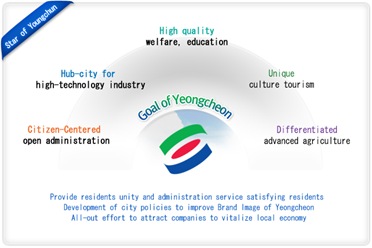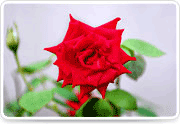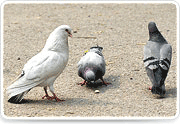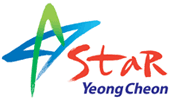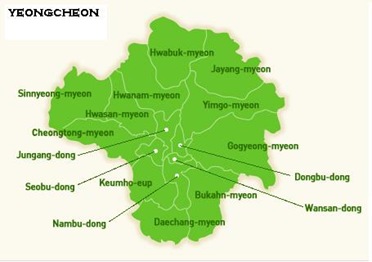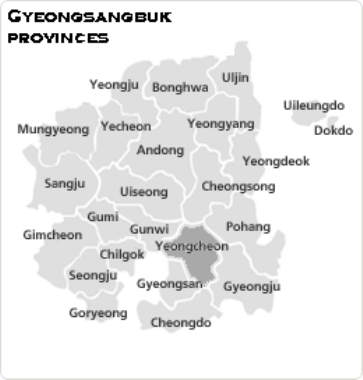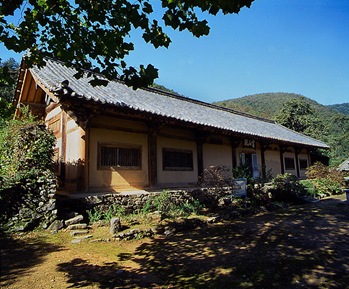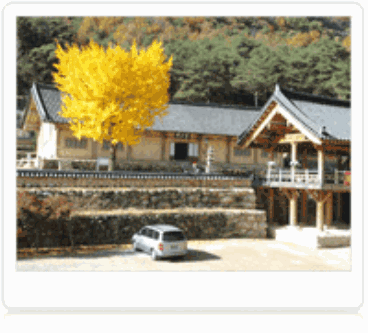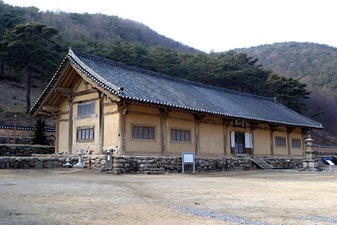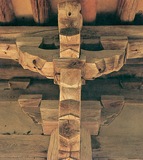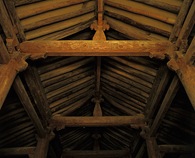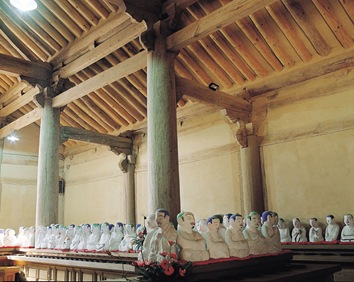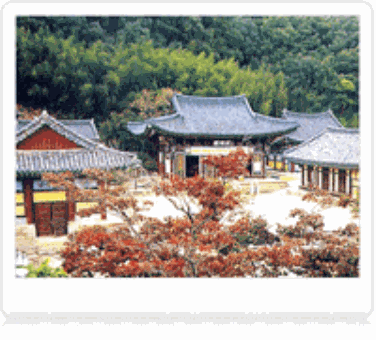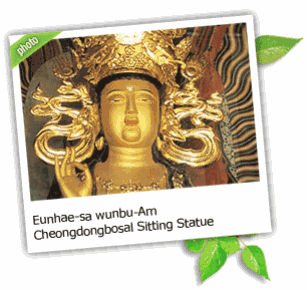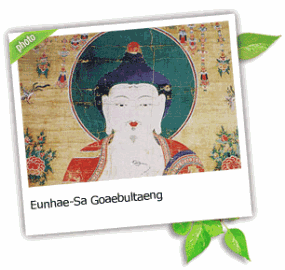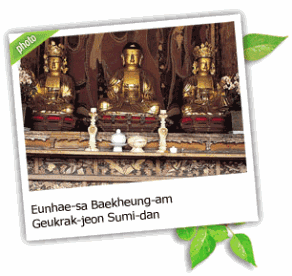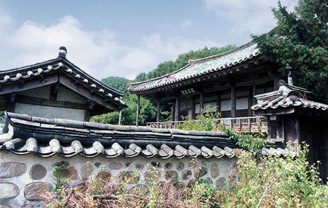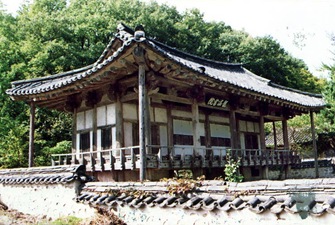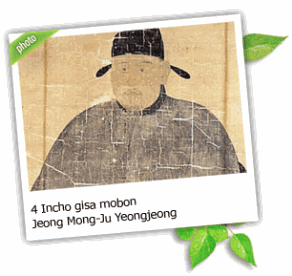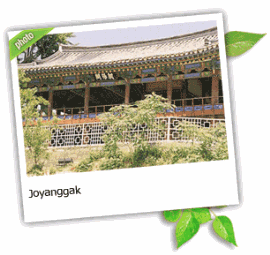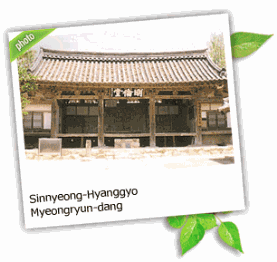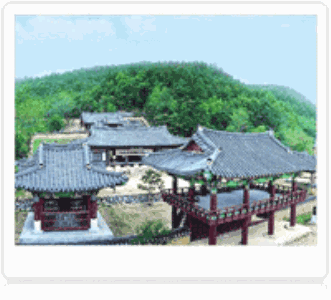Sorry this post is later than scheduled; I had a little mishap with my computer. I was in the middle of writing this post when my computer was hit by a lightning-induced power surge and my computer went ‘kaput’. I had no time to save my documents and everything was lost including my almost completed post and my notes. So I had to rewrite everything from scratch, double the amount of work as well as time spent on doing it. If not for my grand-nephew who so kindly donated his old computer to me (he just bought a new one) I don’t think I will be able to continue this blog as I do not have the budget for a new computer right now. What rotten luck, I had the replacement computer but then my Internet provider had some network problem and I could not go on-line, thus causing further delay as I had to wait some more.
Today I’m going to tell you about some of the festivals of Yeongcheon such as the Yeongcheon Herb Medicine Festival, the Yeongcheon Citizens' Festival, the Yeongcheon Culture Arts Festival, the Bohyeon-San Starlight Festival, the Choe Mu-seon Science Festival and the Yeongcheon Fruits Festival.
The Yeongcheon Herb Medicine Festival
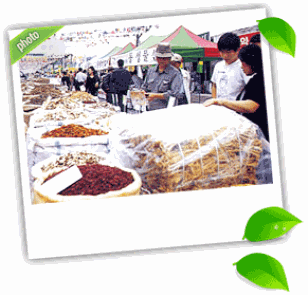
Since ancient times, Yeongcheon has been famous for the gathering of medicinal herbs and is now well known for its advanced oriental medicine.
Yeongcheon holds the Yeongcheon Herb Medicine Festival every October in order to systemize the traditional oriental medicine industry and to make the growing of medicinal herbs its major local industry.
During the herbal medicine festival, there will be events such as a competition for cutting medicinal herbs, free diagnosis of the individual physical constitution, free medical examination and treatment with oriental medicine, skin care using Oriental herbal medicine, lectures on Oriental medicine, There will also be a variety of performances at night.
The Yeongcheon Chinese Herbal Medicine Distribution Complex handles 30% of the national distribution of Chinese herbs. A variety of Chinese herbal medicines can be bought at a cheap price and it is easy to access it since it is near the Gyeongbu Express Highway.
The Yeongcheon Chinese Herbal Medicine Town in Wansan-dong, Yeongcheon city is comprised of 110 Chinese Herbal Medicine stores which sell high-quality Chinese herbal medicine. Recently it has gone on-line so that it now distributes Chinese herb medicine nationwide.
The Yeongcheon Citizens' Festival
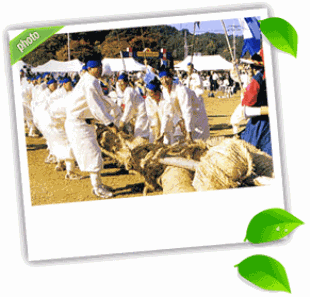
The street gets crowded whenever the Yeongcheon Citizens' Festival starts in October every year. Various events are held everywhere, emphasizing on the traditional cultures and which also provide the stage for 120,000 Yeongcheon residents to get together. Some of the events include fireworks, a pungmul performance, a folk festival, a writing contest and sports events.

The Yeongcheon Culture Arts Festival, also held in October, at the Yeongcheon Cultural Center, Civil Center is hosted to promote harmony and unity among its’ residents and to develop a creative and future-oriented culture. Various exhibitions, folk plays, song contests, martial arts contests, music performance and the Yeongcheon Gotnamu Competition are held.
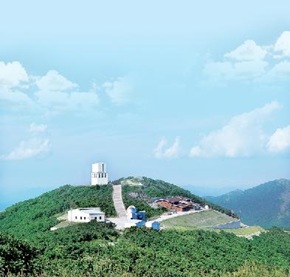
The Bohyeon-san Astronomical Observatory, one of the 3 largest astronomical observatories in Korea, is located at the top of Bohyeon-san.
It is used to observe the movements and the changes of celestial bodies and creation and evolution of the universe.
Bohyeon-san (mountain) Astronomical Observatory provides a panoramic view of the Bohyeon-san ridges.
The Bohyeon-San Starlight Festival
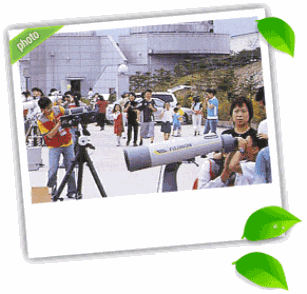
The Bohyeon-San Starlight Festival is held around the Bohyeon-san Astronomical Observatory and around Yeongcheon city each May, which will give one the chance to experience the mystery of the universe. During the festival, astronomical observations through small telescopes, an amateur astronomical camp, a pictorial display of an astronomical observation, an exhibition of Astronomical observation equipment, a seminar on astronomy and farm village visits, will be held.
Choe Mu-seon Science Festival
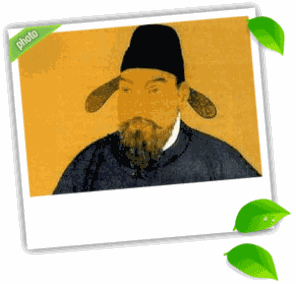
This festival is held in commemoration of Gen. Choi Mu-sun who was a general during the late Goguryo Dynasty and the weaponry inventor of weapons using gunpowder. It is held every April where a memorial service will be held in front of the Choi Mu-seon Memorial Monument. Some of the programs include a science competition, a science composition contest, and visits to historic places.
Choi Mu-Seon(1325~1395)
General Choi Mu-Seon was born in Geumho-eup, Yeongcheon city.
He met Lee Won from the Chinese Yuan Dynasty who knew how to make gunpowder, and whom he allowed to stay at his home in 1376. Choi learned the manufacturing method of gunpowder from Lee and succeeded to make gunpowder for the first time in Korea.
Later, he suggested that the Royal court establish the Hwatongdogam (government office in charge of manufacturing gunpowder using weapons) in 1377.
He prepared the nation for the possible attack of Japanese pirates by manufacturing various gunpowder-using weaponries and warships.
And he contributed a lot in the sinking of 500 vessels of Japanese pirates at Jinp by manufacturing a variety of gun powder using weapons.
The Yeongcheon Fruits Festival
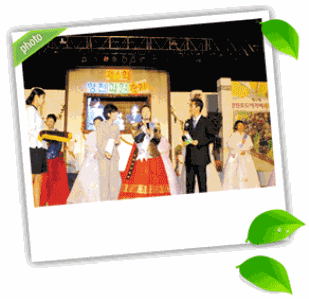
Yeongcheon is famous for the highest quality grapes in the country due to its climate of low rainfall and plenty of daylight. Various programs are being hosted to widely promote the excellence of the Yeongcheon grapes, the local specialty.

The festival is usually held Aug ~ Oct of each year where a thanksgiving ceremony for a fruitful year will be held. Besides that there will be a selection for grape ladies, the operation of a farmer’s market for grapes, an exhibition of grape foods and the experiencing of grapes harvesting.
Chi-san Waterfall
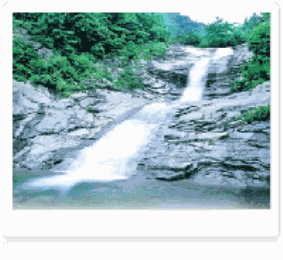
The Chi-san Waterfall has the highest water level and the largest water capacity among all the waterfalls scattered around Palgong-san. In summer, the temperature of the water in Chi-san waterfall is cold enough to make your hands feel icy. But you can take away the sizzling heat if you put your feet in the water. In winter, it is frozen hard so that it is used as the practice ground for mountain climbers to climb ice ridges. There are fantastic rocks and stones which take a variety of shapes around here and the dense forests further enhance its attractiveness.
The Chi-san valley where nature has been kept intact is the perfect tourist attraction where people can have a taste of nature.
Yeongcheon city is creating a tourism resort around this area by building a grand size amusement park covering 82,000 Pyeong so that its citizens can enjoy satisfying leisure activities. A large parking lot, lake side picnic areas and playgrounds for children have been built.
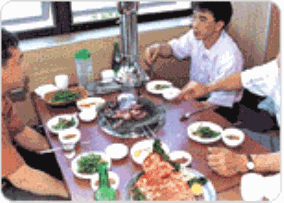
Let’s see what the food in Yeongcheon taste like shall we? Dishes which stimulate one's appetite and foster a pleasant atmosphere. Dishes which have a piquant salty taste which is typical of Gyeongsang-do's cuisine. But they are still plain and neat. In Yeongcheon, there is a taste that a mother creates, which evokes a taste of one's hometown.
Hanwoo-Sootbulgalbie (Korean beef ribs grilled on a charcoal fire)
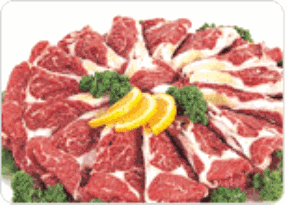
High quality Yeongcheon beef is roasted with special spices and condiments. The taste of the tender and plain meat combined with fresh vegetables is excellent
Sooyuk (boiled beef)
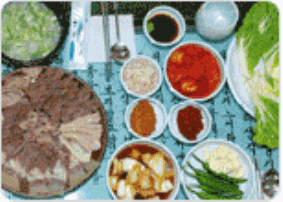
Modernized Yeongcheon market place is famous for its 'boiled beef alley' which is the well known eating place. The taste of the boiled beef wrapped in vegetables is special.
Dakbaeksook (chicken boiled with rice)
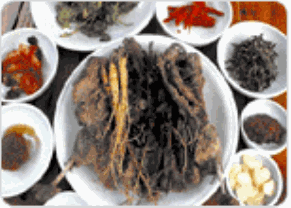
Many people visit Yeoncheon to taste chicken boiled in mineral water (Hwangsu-tang.) The taste of the boiled chicken is chewy and tender and simple with low fat thanks to that mineral water used to boil the chicken.
Sanchae bibimbap (boiled rice with edible mountain herbs)
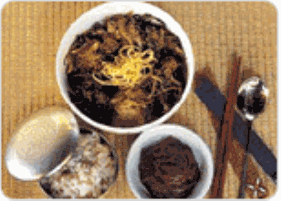
Sanchae bibimbap is chemical-free natural food of high nutritive value, which is made with various wild edible greens grown around Eunhae-sa temple. It is effective for those who suffer from high-blood pressure and diabetes and is the best food to help stimulate one's appetite thanks to its unique taste and aroma.
Hanwoo(Korean beef cattle) Sootbul complex
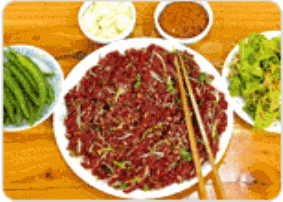
Hanwoo Sootbul Complex is a group of eateries situated in front of the Donam industrial park next to the Gyeongbu Express Highway The taste is the best in that Yeongcheon Hanwoo (Korean beef cattle) bred in the environmentally friendly facilities according to well coordinated program for producing high-quality meat, is grilled over a charcoal fire.
It’s a good thing Yeoncheon has 114 cultural assets to keep us busy, with things to see and do while we are here. We have already seen a few of the temples and seowans, including some of the cultural assets. So today we can visit some of the famous old houses and a few of the other places of interest in Yeongcheon. To start off let’s visit the Jeong Jaeyeong's house in Yeongcheon or Yeongcheonjeongjaeyeongssigaongmitsansujeong, Important Folklore Material #24, in Sammae-ri, Imgo-myeon including the Haengnangchae(Servant's quarters), the Sarangchae (Master's quarters), the Anchae(Housewife's quarters), the Sadang or family shrine and the Sansujeong.
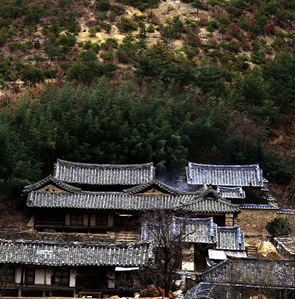
The house sits in what is considered a propitious site, according to the theory of Feng Shui, the geomantic theory.
Jeong Junggi (1685-1757) began with the construction of this house but it was completed by his second son Jeong Ilchan.
This house comprises of the anchae or the women's quarters, the sarangchae or the men's quarters, the sansujeong, ( a separate room for the use of the master of the house), the haengnangchae (servant's quarters) and the family shrine.
The anchae, which is also the main building of the house, comes to view when one steps into the yard through the front gate.
The men's quarters and the raised wooden-floor with railing encircles the whole wing at an angled position. The three-compartment gate wing is linked with the high wall at both sides.
The main house comprises of an inner wooden-floor hall at the center, a master bedroom and a kitchen in the left, which is characteristic of the architecture of houses in the Yeongnam province at that time.
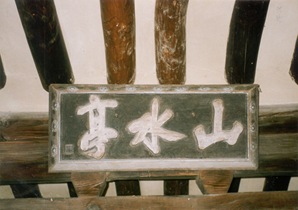
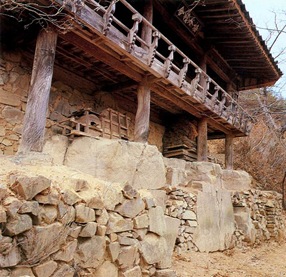
And Sansujeong, a separate room of the men's quarters, is connected to the eastern living room for the master of the house. This is a valuable resource in the study of traditional Korean architecture, topography and folk life of the late Joseon Dynasty.
The Haengnangchae (Servant's quarters) of the Jeong Jae-yeong House in Yeongcheon are a 3-kan (intercolumnar space, a length of about 6 feet) structure with the main gate at the center, a barn on the left and a servant’s room on the right.
The building has a gabled roof.
The facade of the residence consists of the main gate and the long walls that stretch out from the sides of the gate.
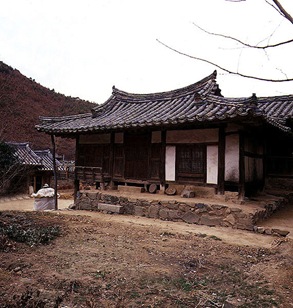
The master’s quarters of the Jeong Jae-yeong House are unique in the layout of the rooms, a rectangular structure is annexed to a 2-kan (intercolumnar space, a length of about 6 feet) room which was used as the master’s study (sarangbang).
The building has a half-hipped roof.
The master’s study is divided into the upper and lower rooms.
The back room at the end of the lower room has a door to the inner court.
A bell rope hung in front of the room was used as a call sign: the bell rings when one pulls the rope.
In the building adjacent to the upper room, there is a room for books and a wooden-floored veranda which is surrounded by railings.
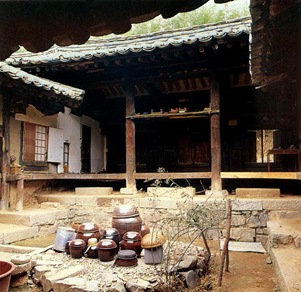
The women’s quarters of the Jeong Jae-yeong House have a 6-kan (intercolumnar space, a length of about 6 feet) main hall in the middle.
On the left side of the main hall are an inner room (anbang), a kitchen, and a wooden-floored room; on its right are a small back room, a wooden-floored room, and a storeroom.
The building has a gabled roof.
The layout of the inner room and kitchen follows the construction style of the southeastern part of Korea (the Yeongnam region).
Round pillars are present both at the front and the rear of the main hall.
The back of the main hall is closed with hinged double doors.
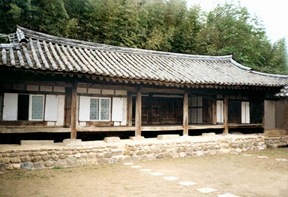
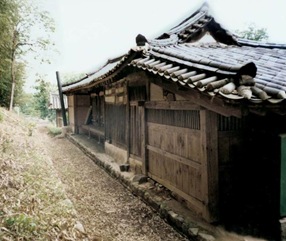
The Yeongcheonjeongyongjunssigaok(Jeong Yongjun's house in Yeongcheon), Important Folklore Material #107, in Seonwon-ri, Imgo-myeon is another important old house.
This house, built on a large site with a pond by the great-great grand father of Jeong Yongjun, the present owner of this house, is composed of the Bonchae (the main quarter) and a pavilion, a separate house.
The buildings of this house, such as Anchae (quarter for women), Sarangchae (quarter for men), Araechae (separate house), and a quarter for sheds, which are all ㅁ-shaped, face in the southwest direction while the pavilion, which is located beside the pond, faces to the south standing apart from other buildings.
The Ilsimdang
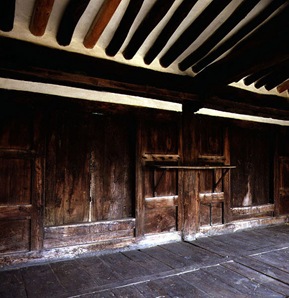
The anchae (wife’s quarters) of Jeong Yong-jun’s house consists of a large main living room, a large daecheong (wooden-floored hall) and a room across the main living room.
They are arranged in a straight line.
Down the main living room are located a large kitchen and a long storeroom.
The L-shaped house building is a structure frequently found in Yeongnam (another name for Gyeongsang-do) areas.
The kitchen and the shed of the separate house, facilitated with a cowshed, a mill, and a shed, stands facing each other, and a treadmill is equipped in the mill.
The Sarangchae, located to the right of the gate, has a room for men, a main hall, a shed, and a living room.
The quarter for sheds is located to the left of the gate. The pond, which was made by expanding the width of a little valley flowing over outside the yard of this house, doesn't look an artificial one.
And the pavilion consists of a hall and an Ondal (floor heating system)-room.
The main building, the pavilion, and the pond with a very effective structure indicate the love of nature, the life-value, and the wisdom of the builder.
The sarangchae (husband’s quarters) of Jeong Yong-jun’s house consists of a sarangbang (husband’s room), a daecheong (wooden-floored hall), the main gate, a storeroom, a jageunsarang (small room for husband) and a floored room.
They are arranged in a straight line.
The main gate is connected to the munganchae (entrance section) on the left side.
The Sarangbang has the ondol (underfloor heating) system and on the three sides of the daecheong are fixed hinged doors to make up for the sarangbang’s narrowness.
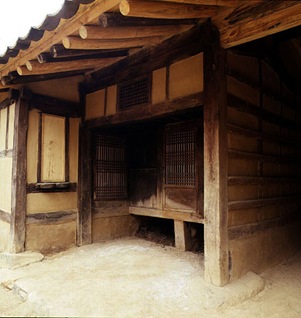
The Haengnangchae(Servant's quarters) of Jeong Yong-jun’s house connects the anchae (wife’s quarters) and the sarangchae (husband’s quarters) in a straight line.
The haengnangchae consists of a cowshed, a mill and a storeroom.
Equipped with a treadmill, the mill stands facing the storeroom in the anchae.
The Yeonjeongmityeonmot is a pond and a pavilion in a valley outside Jeong Yong-jun’s house in Yeongcheon.
Here, one can feel the quiet and secluded atmosphere of a deep mountain village.
The pond was made artificially using the valley water but it looks quite natural, and the pavilion consists of an ondolbang (underfloor-heating room) and a daecheong (wooden-floored hall).
The Byeongwayihyeongsangyupum (Relics of Yi Hyeongsang) Important Folklore Material #119 can be found at 97-1 Ssanggye-dong Yeongcheon-si.

Byeongwa Yi Hyeongsang (1653~1733) was the 10th grandson of Hyoryeongdaegun.
He passed the state-run Byeolsimun examination in the sixth year of King Sukjong and he successively filled various Government posts such as Hojojwarang.
He was recommended as the proper person, skilled in both the literary and military arts, and resumed his new post as a Geumsangunsu (a county headman).
He repressed all thieves and governed wisely there.
He was appointed as Hojochamui in the third year of King Yeongjo but he retired soon after. He then built Hongyeonjeong in Yeongcheon and devoted himself to learning.
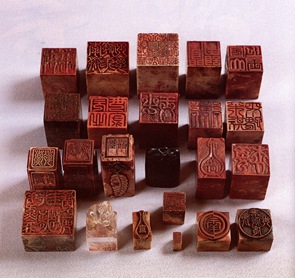
His relics consist of 23 pieces of registered seal, nine Hopae (identity tags), a Korean lute, nine pieces of arrow, six chinstraps of a Korean hat and four Gwanja (headband buttons of gold or jade beads). Most seals are engraved with his name and pen name but quite a number belonged to his descendants.
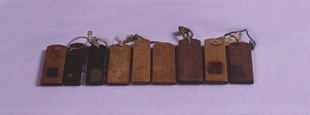
Hopae was issued whenever he passed the exams, and some of them belonged to his descendants.

A Korean lute, made from a blighted birch tree in Baengnokdam, Mt. Hallasan was presented to him by an unknown old man when he was an administrator of Jeju for his wise administration.
There is also the Dangeummyeong with the prelude engraved on it.
The baton was made of ivory and he carried it when he wore the government uniform.
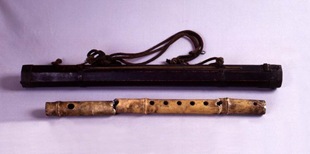
A gem flute was damaged and divided into two.
It showed that he was interested in music and was well versed in it. So he wrote lots of books on it.
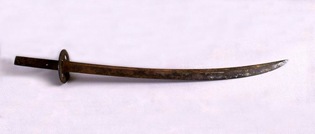
Among the relics are the Gokdo (a kind of knife) and two pieces of silver-decorated knives. The Jangdo (an encased ornamental knife) is 67.8 cm long and 3 cm wide and its grip is 12.3 cm long. It shows the changes of the style of Jangdo after the Japanese Invasion of Korea in 1592.
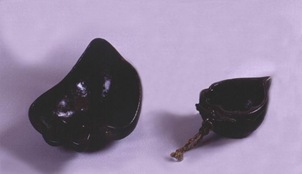
A small gourd was designed to be worn on the waist
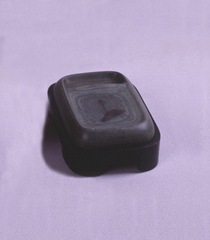
An ink stone in a black lacquer case

The chinstraps of a Korean hat
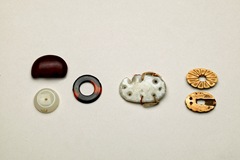
Gwanja (headband buttons of gold or jade
All their qualities show his power then.
We can find his nobility from these relics and they are regarded as the precious folk materials that cannot be found nowadays.
The Orijangnim forest in Jacheon-ri, Yeongcheon, Natural Monument #404, was planted with trees to act as a windbreaker in the 1580s. At present, 280 trees of 12 species including the Oriental Cork Oak Tree are growing in the forest. It was called the "Orijangnim" because the length of this forest is "Ori" meaning 2km. This forest is also known as the "Jacheon forest".
To this day, the villagers perform a ceremony for peace every January 15.
Since the forest is valuable in locality, ethnicity and biology, it is designated and protected as a Natural Monument.

Parknogyejippanmok(Wood blocks for printing Nogye's poems) Tangible Cultural Properties #68.
The 99 wood blocks here are for printing a collection of poems by Park Inro(1561-1642), one of the greatest posts of the Joseon Dynasty(1392-1910).
Also known by his pen names Nogye and Muhaong, Park was born in Yeongcheon, and excelled in poetry since childhood.
He served as a naval officer during the Japanese Invasions of 1592-98 and composed many patriotic poems during the war years.
A follower of Taoism, Park wrote lyrics glorifying the beauty of nature and life in the countryside.
His poems written both in Chinese and Korean contributed much to the development of Korean poetry.
The collection of poems, these print blocks represent, comprises of three chapters in two volumes. (9985 sheets in all)
They include seven of his best long poems and 68 short Sijo lyrics, which are all regarded as gems of Korean literature.

The Jayangseodang(Jayangseodang village school) in Sammae-ri Tangible Cultural Properties #78.
This village school is said to have been established in 1546 by Kim Eungsaeng, the third minister in the Ministry of Taxation during the reign of King Myeongjong(1545-67) in his hometown in Nohang-dong, Jayang-myeon.
The present structure, which appears to be the work of a much later construction, was dismantled and rebuilt here in 1967 due to the construction of the Yeongcheon Dam. A surrounding wall and a gate were added at the time.
Comprising of a wooden hall that served as a reading room and a dormitory to accommodate live-in scholars, the simple school house lacks the front veranda that usually accompanies such a building.
A plaque inscribed with the calligraphy of Yi Hwang (Toegye, 1502-70) hangs on the wall.
General Kim Wan, whose memorial tablet is enshrined in Dongningak near here, is the third son of Kim Eungsaeng.
And so ends our visit to Yeongcheon-si. Hope that you had a good time. See you again soon.

